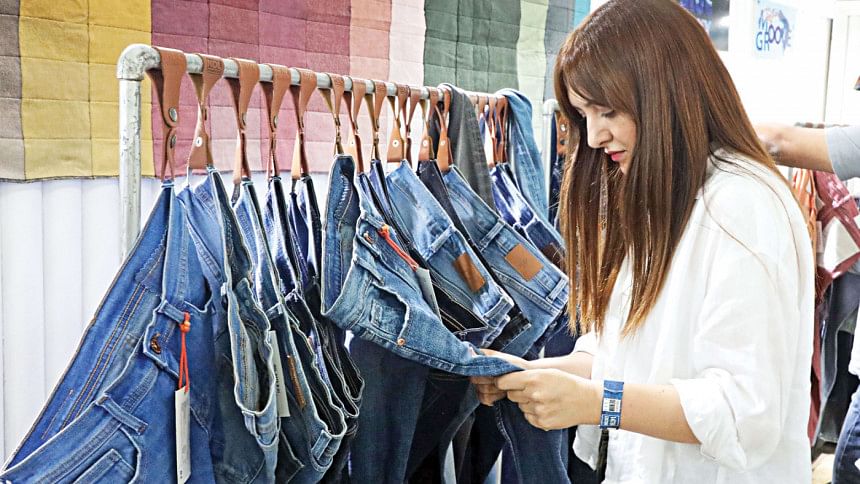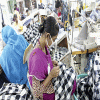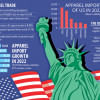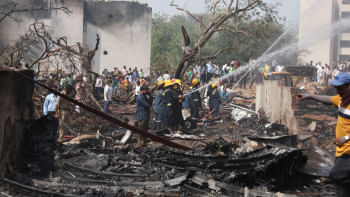Christmas apparel shipment to be dull

Local garment exporters do not expect any substantial increase in shipments to the Western world centring upcoming Christmas sales because of high inflation and for old stocks remaining unsold in retail stores in the American and European markets, exporters said.
Of all the garments shipped from Bangladesh throughout the year, nearly 60 percent is meant for the Christmas season.
The Christmas shipments start from September and continues up to the first week of December. The associated work orders are placed between April and August and the production also runs during this period.
However, the factories this year said to have received a lower number of work orders from international clothing retailers and brands.
"I do not see any jump in shipment of apparel from Bangladesh to the Western world during this Christmas time," said Anwar Ul Alam Chowdhury, chairman of Evince Group, a leading garment exporter.
Consumers in the Western world are facing inflation in their countries, he said.
Moreover, the retailers and brands have old unsold stocks of garment items in their stores for Christmas sales, he said, adding that this has reduced demand for new apparel items.
Shipments for Christmas may not increase a lot, as is expected by many, said Kutubuddin Ahmed, chairman of Envoy Legacy.
However, more work orders are coming in for the subsequent spring season, he said.
Buyers are not placing work orders for bulk quantities now, rather are inquiring a lot, he said.
So, a full recovery from the pandemic and Russia-Ukraine war-induced slowdown in garment shipments may take even after the next spring season, he added.
Ahmed said he received a large number of work orders from his buyers and he thought that they would continue seeking bulk quantities but they had not done so.
Instead, the buyers are offering very low prices, he said.
A much-expected rebound of garment export may not take place this Christmas as the retailers and brands have old stocks in their stores, said Md Shahidullah Azim, vice-president of Bangladesh Garment Manufacturers and Exporters Association (BGMEA).
Also, the prices being offered by the international retailers and brands are so low that the local suppliers are starting to say that "no business is better than monkey business", Azim said.
This is implying that the local suppliers are ready to refuse work orders from buyers who are offering low prices, he said.
There are a lot of inquiries from international retailers and brands but they are not placing work orders, he said.
So, it may take more time for a greater number of work orders to start coming in , Azim said.
Exporters said the low number of work orders was not a challenge only affecting Bangladesh.
Almost all garment exporting countries are facing a similar situation for high inflation stemming from the severe fallouts of the pandemic and the Russia-Ukraine war, they said.
The exporters pointed out that Bangladesh has been staging a relatively strong performance even at this time of a global economic slowdown.
For instance, clothing imports of the US from Bangladesh surged 36.38 percent to $9.74 billion in 2022, up from $7.16 billion in 2021.
With this, Bangladesh retained its place as the third-largest apparel supplier for the US with a 9.75 percent share, an improvement from 8.76 percent in 2021.
China, the top apparel import source for the US with a 21.75 percent market share, posted a 10.83 percent growth to $21.73 billion in 2022, according to according to data from the Office of Textiles and Apparel (Otexa) of the US Department of Commerce.
It was $19.60 billion in 2021 and $27.37 billion in 2018, Otexa data showed.
US consumers are still buying more than last year but spending growth is slowing as the economy settles down amid higher interest rates intended to reduce inflation, an August 15 article on www.fibre2fashion.com quoted National Retail Federation Chief Economist Jack Kleinhenz as saying.
"The economy was clearly more resilient in the first half of this year than many expected, and the consumer environment has been positive as inflation has slowed," Kleinhenz said.
"Nonetheless, there are ongoing economic challenges and questions, and the pace of consumer spending growth is becoming incrementally slower," he said.

 For all latest news, follow The Daily Star's Google News channel.
For all latest news, follow The Daily Star's Google News channel. 





Comments